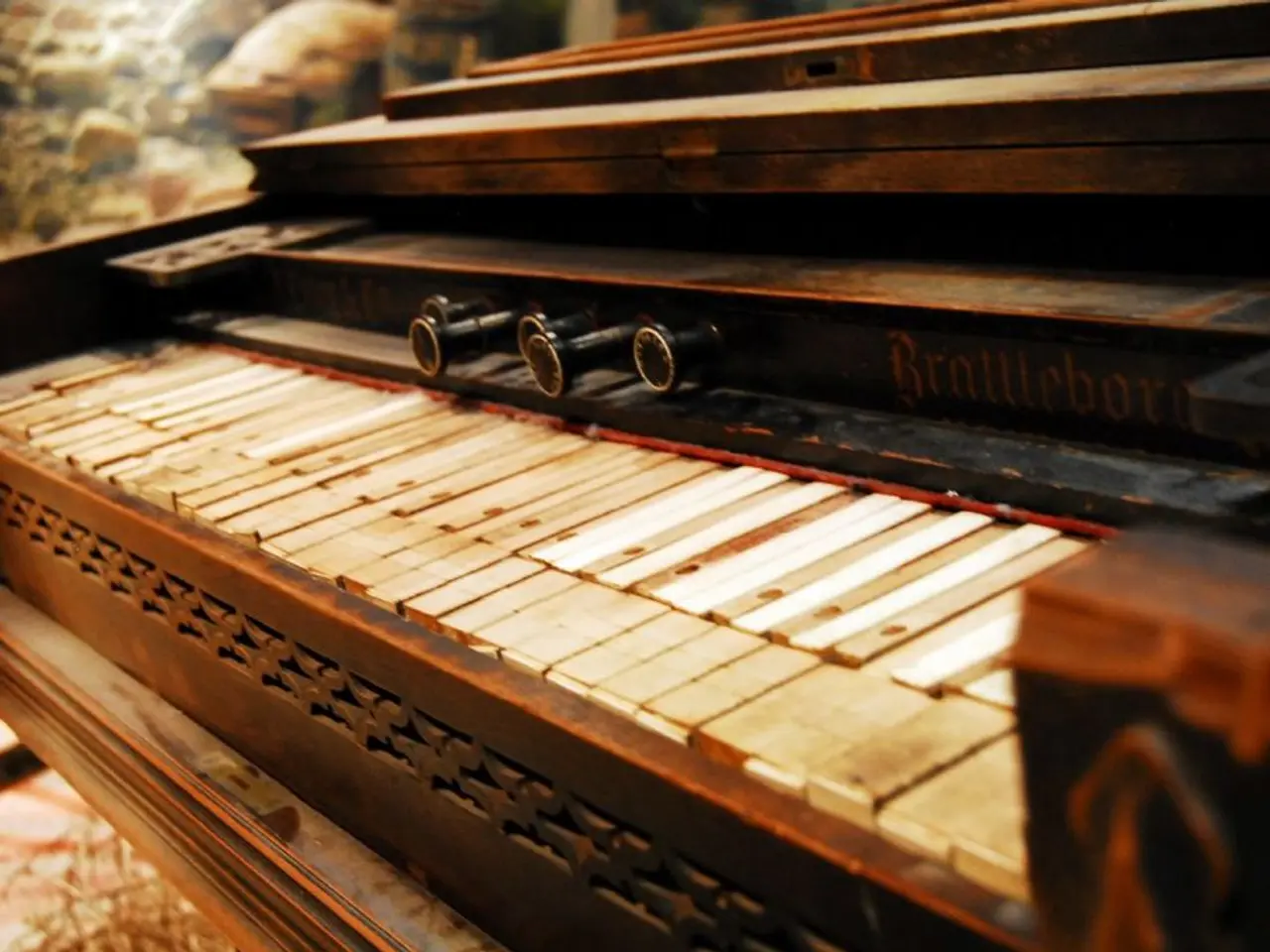Elegant Melodies of Neoclassical Piano Music: Everlasting Grace
In the early 20th century, music took a new direction, moving away from the Romantic period and ushering in the Neoclassical era. This shift marked a significant change in the piano music scene, as composers began to explore the instrument's capabilities within the framework of classical structures, yet with a modern twist.
Neoclassical piano music, with its enduring legacy, continues to captivate audiences across generations. Its timeless allure lies in its simplicity, elegance, and intellectual clarity, qualities that have made it a favourite among both composers and listeners.
The Neoclassical piano repertoire is characterised by several key features. One such feature is the use of traditional forms, such as sonata form, which provides a structured framework while allowing for modern expression. Emotional expression is another hallmark of Neoclassical piano music, with composers openly exploring personal connections with the listener.
Tonality and experimentation are also integral to Neoclassical piano music. While it often uses diatonic harmonies, relying on major and minor scales, it may also venture into atonality, incorporating a wider range of tonal structures than traditional classical music. Instrumentation, too, is diverse, with traditional classical instruments like the piano being central, but with elements from popular music or folk music occasionally incorporated to expand the range of sounds and styles.
Modern Interpretation is another defining characteristic of Neoclassical piano music. It blends historical aesthetics with contemporary sensibilities, creating a unique blend of the old and the new. For instance, modern composers like Sergey Yenanov frequently combine solo piano with soft string accompaniment, creating a peaceful and romantic atmosphere.
Neoclassical music seeks to recapture the spirit of the Classical era, with a focus on clarity, balance, and restraint. Composers strive to balance honouring classical traditions with incorporating contemporary elements and personal artistic sensibilities. This balance is evident in the works of composers like Igor Stravinsky, whose groundbreaking composition "Pulcinella Suite" had a significant influence on Neoclassical piano music.
Alexandre Desplat, Philip Glass, and Yann Tiersen have embraced the elegance and emotional depth of Neoclassicism in their film compositions, while Ludovico Einaudi, Yiruma, and Max Richter have added new dimensions to the genre with their Neoclassical-inspired compositions. Francis Poulenc's piano compositions, such as "Trois mouvements perpétuels" and "Nocturnes," showcase the essence of Neoclassical elegance, while Erik Satie's piano compositions are known for their delicate simplicity and subtle harmonic textures.
As the musical landscape continues to evolve, Neoclassical piano music continues to adapt, finding a place in film scores and creating atmospheric and evocative soundscapes. Despite its roots in the past, Neoclassical piano music remains a vibrant and relevant part of modern music, inviting intellectual engagement from both the composer and the listener.
The timeless allure of Neoclassical piano music lies in its balancing act between traditional structures and modern expression, making it a favorite among composers and listeners. Composers like Sergey Yenanov and Alexandre Desplat continue to embrace the elegance and emotional depth of Neoclassicism, blending historical aesthetics with contemporary sensibilities in their piano compositions.




